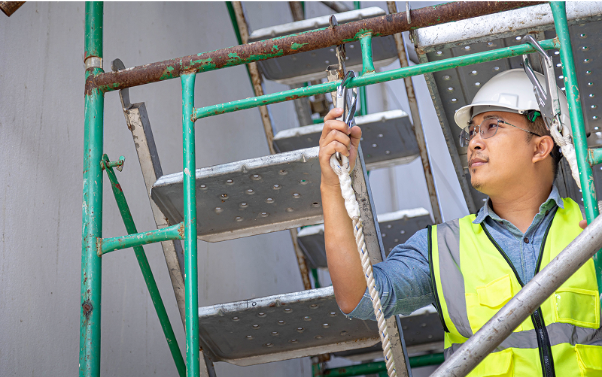Whether you manage a site, work at height, or handle hazardous materials, understanding personal protective equipment in Singapore is essential to creating a safe, compliant workplace. Yet with so many components—helmets, gloves, respirators, and safety harnesses—it’s easy to feel overwhelmed. That’s where this cheat sheet comes in. Here’s everything you need to know to select, use, and maintain your PPE, with a focus on fall protection and safety harness inspection.
1. Start with a proper risk assessment
Before selecting any personal protective equipment in Singapore, always carry out a detailed risk assessment. Identify the hazards present in the work environment—be it falling from heights, exposure to chemicals, or flying debris. The type of PPE used should directly respond to these risks. For example, if your workers are exposed to height-related dangers, prioritising a certified safety harness in Singapore becomes non-negotiable.
This step lays the foundation for choosing PPE that protects workers rather than simply ticking compliance boxes. Without it, even the best gear may be ineffective or misapplied.
2. Select the correct PPE for each task
Personal protective equipment is not one-size-fits-all. What works for a warehouse picker may not be suitable for a roofing contractor. When sourcing PPE in Singapore, match equipment not just to the environment but also to the specific job task. If fall protection is required, select a full-body safety harness with the correct anchorage and shock absorber systems.
For confined spaces or high temperatures, consider additional features such as fire resistance or lightweight materials. Proper selection minimises fatigue, increases wearability, and improves overall compliance on site.
3. Ensure correct sizing and adjustment
Even the most advanced safety harness in Singapore fails if it doesn’t fit properly. Poorly fitted gear can increase injury risk or render fall protection useless. Harness straps should sit snug but not tight, with chest straps centred and leg straps firm. Workers should always adjust gear to their body before use—borrowing or sharing without checking fit can be dangerous.
Similarly, PPE such as gloves, helmets, or face shields must suit the wearer’s measurements. Ill-fitting equipment reduces dexterity, limits visibility, or doesn’t stay in place during use.
4. Make safety harness inspection a daily habit
Regular inspection is crucial for any gear used in fall protection. Before each shift, workers must check their safety harness for signs of wear, frayed webbing, rusted buckles, missing labels, or damaged stitching. Any issue—even minor—can compromise performance in a fall situation.
In Singapore, safety harness inspection must also follow formal periodic checks in line with manufacturer guidelines or regulatory standards. A trained person should perform these inspections and document them for audit purposes. Treat your harness like a lifesaving device—because that’s exactly what it is.
5. Train staff in proper usage and limitations
Buying high-quality personal protective equipment in Singapore is only half the job. Training workers to use it properly closes the loop. Every employee should know how to put on, adjust, and secure their safety harness, as well as how to use lanyards and anchor points. Training should also cover emergency rescue procedures in case of a fall.
Beyond usage, it’s important to explain what PPE can and cannot do. For example, a harness may prevent a fall from being fatal, but it doesn’t eliminate the risk of suspension trauma if rescue is delayed. Understanding limitations leads to more realistic, responsible use.
6. Store PPE properly to extend its life
Storing PPE correctly is an often-overlooked part of workplace safety. Harnesses and other gear should be kept in a cool, dry space away from direct sunlight, chemicals, or sharp objects. Hanging harnesses from dedicated hooks or placing them in storage bags prevents unnecessary damage.
Improper storage shortens the lifespan of gear, increases replacement costs, and raises the risk of equipment failure. Make it routine to check storage conditions and clean PPE after use.
7. Review and update your PPE programme regularly
Workplaces evolve, and so should your PPE protocols. As new tasks are introduced or site layouts change, update your selection of personal protective equipment in Singapore accordingly. Review the results of safety harness inspections and audit training logs to ensure everyone remains equipped and informed.
Regular updates help identify gaps before incidents occur. A proactive PPE programme reflects a genuine commitment to safety and can improve morale by showing staff that their wellbeing is prioritised.
Need expert guidance on sourcing and managing safety gear? Contact Safetysam today for reliable personal protective equipment in Singapore, including certified safety harnesses and professional safety harness inspection services.

